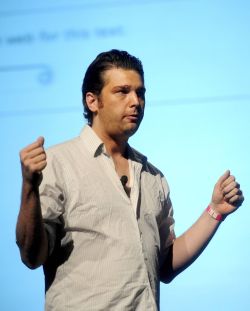THE world is getting more and more crowded; and I’m not just talking about the population, although the numbers have ballooned from around 3 billion in the 1960s to about 6.5 billion last year according to UN estimates.
But I’m really talking about people being surrounded by hundreds of friends, thanks to the internet.
A recent study on social networking released by the research company TNS found that Malaysians were the most “friendly” people on social media, with an average of 233 friends each online. That’s a steep increase from the 30 or so odd friends I had when I was growing up, and not all of them were very close friends either.
But it’s a different world today. My Facebook profile tells me I have 957 friends, and at least 700 of the people I follow on Twitter are following me back. It’s not uncommon for teenagers to have a couple of hundred “friends” either. And before you start writing this off as “just a number”, consider the fact that I’ve interacted with more than 700 of these people in the past year.
Our social circles are looking very different today. If I may, they are becoming quite, crowded. I get a steady stream of updates on Foursquare, identifying the location of my 200-plus friends. These are the really close ones that I’d allow to see where I am. On Twitter and Facebook, it’s not difficult to trade conversations with more than 20 different people a day. An emerging crowd dynamic is at work here.
This development didn’t just happen yesterday, and I’m not the first person to notice this. In fact, many people have found it incredibly useful to crowdsource ideas and information, get polls done quickly, and figure out what interesting stuff is going on around them.
Ever tweeted out “I’m bored. What’s a good movie to watch?” and get a barrage of replies from friends and people you only knew online?
Ever noticed how Facebook advertisements eerily keep you informed of what your friends are “liking” and suggest you do the same?
Everyone is now in the centre of a crowd. A crowd that is a treasure trove for finding things out, getting involved in a group and getting questions answered. Now, when you take that crowd up a notch, and start organising it into a group or collective, there’s one more thing being part of this crowd does: it gives you more power to enact change.
Activists have understood this secret for years, but there’s a new wave of collectives forming on the internet, inspired by the success of a new start-up in 2009 called Groupon (www.groupon.com). The idea behind this “group” or “community” as you might loosely put it is to pool like-minded consumers together – people who all want to buy one thing – and use the economies of scale to get retailers to offer discounts to the group.
Even locally, this concept isn’t entirely new. Check out lowyat.net for example, and you’ll see many group-buying threads seeking people to pool-in to get a better deal. It’s like taking your brother to the camera shop and telling the owner you’d like to buy two of the same camera, and would like discount to go with it.
But as social networking has changed the dynamic of “friends” and “crowds”, companies like Groupon are finding new ways to connect people (who may not even be friends) together in far wider-reaching and efficient ways to achieve bigger economies of scale (read: bigger discounts). In Malaysia, one such company that’s emulating this model and taking it further is GroupsMore (www.groupsmore.com).
“We launched GroupsMore in September 2010 to enable people to group together and experience more out of life at a significant discount,” says Joel Neoh, Executive Director at YouthAsia, which founded GroupsMore.
Some research YouthAsia did before launching GroupsMore found that 38% of Malaysians aged between 15 and 35 have made online purchases before, and a further 28% are keen to buy online.
The idea is to get a wider audience and a bigger group, so more retailers, business owners and manufacturers will offer discounts and specials for everyone. Explaining the business model, Joel stresses that “if not for the power of social networking, group buying (like this) would not work.”
GroupsMore is just the beginning though, in my own humble opinion. Knowing the rabid retail appetite of Malaysians, our soft spot for anything cheap and discounted, and the financial realities young people face, I can see how a model like GroupsMore can succeed. But there are still plenty of questions to be answered, like: “Where’s the sweet spot in between giving a discount and making money?”
One thing is for sure, however: the bigger the crowd, the better it works out for everyone. So, if you’re in the market for some discount deals, check Groupsmore out.


Tell us what you think!